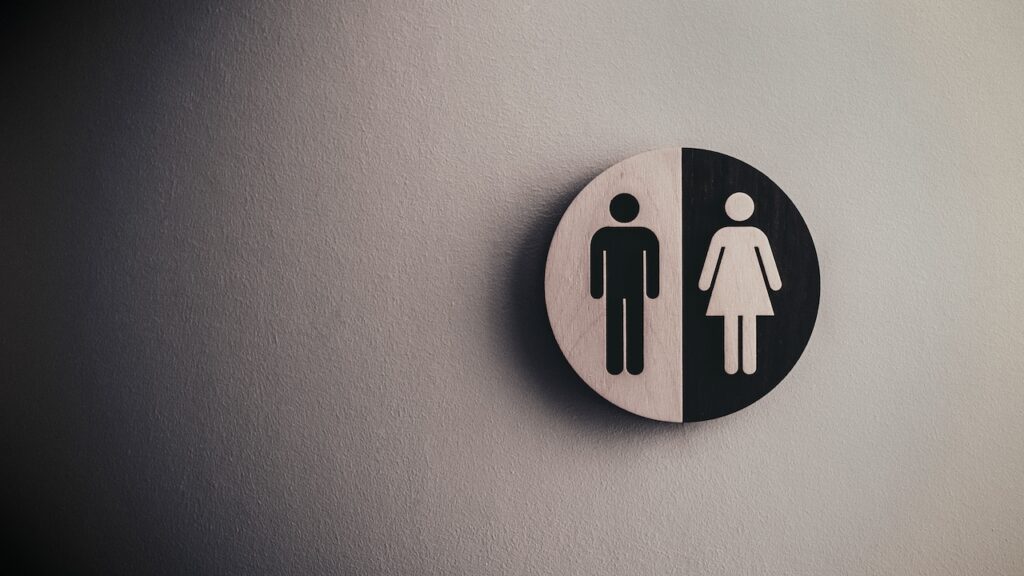Mold is growing in your toilet bowl because it’s an ideal breeding ground for certain types of it.
Constant moisture or wetness, low or poor ventilation, and the presence of certain organic matters and compounds best left unlisted all combine to make a great little home for the microscopic mold spores to turn into a full-blown mold colony.
If mold is limited to your toilet bowl alone, you can simply clean and remove it using bleach or another household cleaner.
Bleach isn’t recommended for mold removal in general, but in a toilet bowl specifically, it is acceptable.

“Because our toilets are completely non-porous porcelain, they’re one of the only areas in the home where bleach can be safely used to remove mold. Pour a couple of ounces of chlorine bleach into the toilet bowl, and give it a quick scrub with the toilet brush.“
Mold Solutions, LLC
Mold-Causing Culprits
Curious to know why mold has set up camp in your toilet? Let’s dive into the various factors that contribute to this unwanted bathroom guest.
1. Moisture and Lack of Ventilation
Toilets, by nature, are prone to moisture, which is an essential ingredient for mold to flourish. But it’s not just water that’s the problem; a poorly ventilated bathroom creates the perfect, steamy environment for mold growth. A bathroom fan can make a world of difference, yet it’s often overlooked or not used sufficiently. Imagine the situation as a party invitation for mold: a moist, warm, poorly lit place. The mold is not just growing; it’s thriving!
2. Neglected Cleaning
Regular cleaning is the nemesis of mold. However, most of us forget to clean the less visible parts of the toilet like the tank, the flush handle, and behind the toilet. Mold likes to hide in these hard-to-reach areas. And don’t forget the grout between tiles; that’s also a heaven for mold. The point is, thorough and regular cleaning is key to preventing mold growth.
3. Plumbing Issues
Another perplexing cause could be underlying plumbing issues. For example, a leaking toilet tank or a running toilet increases moisture levels. As we already know, moisture is mold’s best friend. Periodic inspection of your toilet and plumbing can help catch these issues early on.
4. Organic Waste
Toilet mold might also thrive on organic waste like skin cells, urine, and fecal matter. Yes, it’s a nasty thought. But these organic materials can provide mold with the sustenance it needs to grow. Regular cleaning using anti-mold products can significantly reduce the likelihood of this problem.
5. Seasonal Factors
Surprisingly, seasons also play a role. High humidity levels during summer can encourage mold growth. Therefore, being extra vigilant about cleanliness and ventilation during humid months can help keep mold at bay.
Solution? Bleach is Acceptable Here
To sum it up, mold growth in your toilet is primarily caused by moisture, lack of ventilation, neglected cleaning, plumbing issues, organic waste, and even seasonal factors. Regular and thorough cleaning, improving ventilation, and keeping an eye on your plumbing can help you maintain a mold-free toilet. Remember, mold not only looks and smells bad but can also pose health risks. So, taking steps to eliminate it is not just about aesthetics; it’s also about maintaining a healthy living space.
Because our toilets are completely non-porous porcelain, they’re one of the only area in the home where bleach can be safely used to remove mold. Pour a couple of ounces of chlorine bleach into the toilet bowl, and give it a quick scrub with the toilet brush. If you suspect a problem beyond your toilet, contact Mold Solutions for a Free Environmental Consultation.
Signs It’s a Bigger Problem Than Just a Toilet
If these signs are also present, you should consider treating your mold problem more seriously (than merely cleaning it out of a toilet:)
- Feeling ill when at home specifically: Coughing, sneezing, red eyes, etc. (Occurs due to mycotoxins and airborne mold spores.)
- Recent or earlier unhandled water intrusion or moisture damage, spills. (Mold will grow in 24-48 hours if unhandled.)







